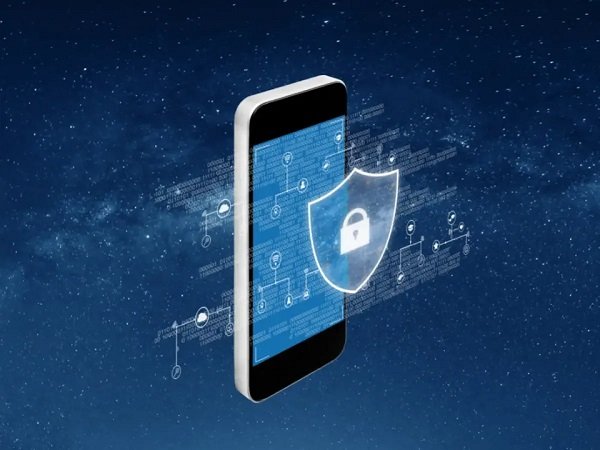As of this current mobile age, applications on the mobiles are now a necessity in society. A Smartphone would be hardly imaginable without numerous applications to fully support our social networking, entertainment, banking, and even shopping experiences. However, the more regular the use of mobile applications, mobile app security risks, therefore, pose a growing concern. The users and developers must have proper knowledge and use proper security measures so as to ensure that user data is secured and that mobile experience is secure.
- Secure Data Storage and Transmission
Sensitive user data, such as login passwords, financial information, and personal information, is frequently handled by mobile applications. A secure app or one that is susceptible to assaults may depend on how this data is transferred and stored. To avoid unwanted access, data that is locally stored on a device needs to be secured using robust encryption techniques. Furthermore, employing secure key management procedures guarantees that encryption keys are adequately safeguarded and difficult for possible attackers to obtain.
Another crucial security factor is the data transfer between the mobile app and backend servers. Secure protocols should be used to encrypt all network interactions in order to guard against data interception and man-in-the-middle attacks. This involves putting certificate pinning into practice to confirm the legitimacy of server certificates and stop complex attacks that try to get around the built-in SSL/TLS security. Frequent network communications security audits can assist in locating possible weak points and guaranteeing the security of data transfer.
For more sensitive data, developers should think about adding more security layers. When available, this can entail utilizing safe hardware storage solutions. Critical information including encryption keys, authentication tokens, and user credentials are further protected by these platform-specific security mechanisms. Additionally, putting in place appropriate data validation and sanitization helps guard against injection attacks and guarantees that only authentic data is sent and kept.
- Authentication and Authorization
The cornerstone of mobile app security is robust authentication. In the current threat landscape, basic password-based authentication is no longer adequate. Where appropriate, apps should instead employ multi-factor authentication (MFA), which combines the user’s identity (biometric data), possessions (device or token), and knowledge (password). Attackers will find it far more difficult to obtain illegal access to user accounts thanks to this multi-layered strategy.
Another essential component of permission and authentication is session management. Secure session tokens with suitable expiration dates and adequate logout procedures should be generated by mobile apps. This guarantees that user sessions are appropriately ended when necessary and helps avoid session hijacking attacks. Strong authentication security is also maintained by putting in place appropriate password regulations, such as minimum length standards, complexity guidelines, and frequent password changes.
- Code Security and Protection
Just as important as safeguarding the data within and transmitted by a mobile app is the task of securing the app’s code. To ensure such an attack is rather complex to execute, this also requires employing proper code obfuscation measures that will make it hard for the attacker to understand how the application was made and how it functions. Code obfuscation is defined as the procedure of transforming source and object code in such a way that it would be less comprehensible while maintaining its operational characteristics. This decreases the chances of other people easily identifying and exploiting specific proprietary algorithms, business logic and security measures that are unique to your website.
In order to stop tampering and unwanted changes to the application, runtime protection methods are equally crucial. This entails putting integrity checks in place to make sure the program hasn’t been altered, identifying whether a device is root or jailbroken, and stopping debugging attempts. Furthermore, putting in place appropriate error handling and logging procedures makes it easier to spot possible security problems while making sure that private data isn’t revealed in error messages or logs.
This means that in order to protect the application it is necessary to apply security fixes & upgrades at the application code level at a consistent interval. This involves, for instance, frequently looking for new security vulnerabilities in third-party libraries and dependencies and replacing the vulnerable versions with the newer, more secure ones as soon as they become available. A good SDLC and the correct use of version control helps ensure that security is considered from the start of software development and that problems are resolved as soon as they are discovered.
- Input Validation and Data Sanitization
Preventing typical security flaws like injection attacks, buffer overflows, and cross-site scripting (XSS) requires proper input validation and data sanitization. Prior to processing, all user input—whether obtained via forms, APIs, or other interfaces—should be carefully verified. This entails verifying that the data types, length constraints, and format specifications are correct. Furthermore, using appropriate input sanitization aids in removing potentially harmful stuff before it has a chance to do any damage.
Because client-side validation can be circumvented, server-side validation should always be used as the main line of protection against malicious input. This entails verifying that all parameters obtained via APIs adhere to the necessary specifications and format. By putting in place appropriate error handling for validation failures, possible security risks can be avoided and users can receive insightful feedback when their input is denied.
- API Security and Backend Communication
Maintaining overall application security depends on the security of the connection between mobile apps and backend services. To guarantee that only authorized clients may access backend services, this involves putting in place appropriate API authentication and permission procedures. Application code should never keep API keys in plaintext; instead, they should be appropriately secured. Implementing rate limitation and keeping an eye out for questionable activity also aids in preventing API service abuse.
In order to preserve security and give users insightful feedback, API connections must handle errors properly. This entails putting in place suitable error codes and messages that conceal private data about the backend system. Putting in place appropriate logging and monitoring of API usage also aids in spotting possible security flaws and odd trends that could point to an attempted attack.
Conclusion
To keep ahead of possible attacks, mobile or enterprise app security is a complicated and dynamic problem that needs ongoing attention and updates. Organizations may better safeguard user data and uphold user base confidence by carefully evaluating and implementing security measures across all facets of mobile application development and deployment. Long-term mobile app security requires regular security audits, updates, and staying informed about emerging security threats and best practices.








